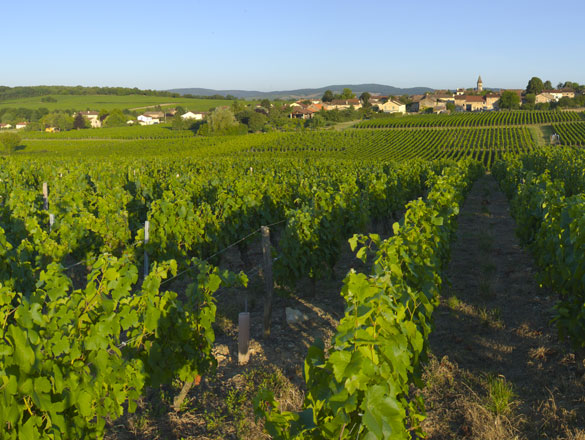

The vineyards of Bourgogne produce some great wines with a historical and international reputation. However, the region is not simply limited to its iconic appellations. In addition to its Village Premier Cru and Grand Cru AOCs, it also produces a range of wonderful Régionale and Village appellations to explore.
You will also find a full list of the Bourgogne’s Climats and lieux-dits on this page.
Check out the complete list of the 84 Bourgogne appellations.
However, your exploration has only just begun. Bourgogne wines have never before offered such high quality. Besides our range of internationally celebrated wines, try some of our lesser-known appellations where there are lots of surprises in store.
And for a fun way to find out more about the wines on offer, try out our “Which Bourgogne wine is right for me?” quiz, or check out Bourgogne Maps to take an interactive tour of the region.
Village appellation
VIGNOBLE DU MÂCONNAIS
26 février 1999
Whites only - Chardonnay.
Area under production*:
1 hectare (ha) = 10,000 m2 = 24 ouvrées.
456.22 ha
Average annual yield**:
1 hectolitre (hl) = 100 litres = 133 bottles.
22,953 hl
*In 2022 **5-year average, 2017-2021
Appellation Village of the Mâconnais region (Saône-et-Loire).
This appellation, created by a decree dated 26 February 1999, replaces the former white-wine appellations MÂCON-CLESSÉ and MÂCON-VIRÉ.
It includes no Premier Cru Climat.
On the label, the name of the Climat from which the wine comes may appear immediately below the words VIRÉ-CLESSÉ.
The label may also include the mention Vin de Mâcon or Grand vin de Mâcon.
Producing communes: Clessé, Laizé, Monbellet, Viré.

The colour is a pale but brilliant gold, somewhere between white-gold and yellow, with in some cases greenish highlights. The nose makes an immediate and pleasant impression with a bouquet of may-flowers or acacia, springtime honeysuckle, and broom, together with notes of lemon balm, white peach, verbena, and mint or bracken. As the wine ages, quince jam and pine make their appearance. Lively and fresh, with a slight edge and yet well-rounded, this wine is a reliable introduction to the Mâconnais whites. It is delicate and supple and has a tender and spontaneous side with a touch of nervosity which does it no harm.

Its attack brings the mouth to life with its minty notes, and even more so by its pleasingly straightforward and rather lively approach. For this reason, tender meats in sauce - veal for example - do it justice since its vivacity adds depth and consistence to the food. Its aromatic intensity is also suited to poultry, crustaceans, and sauted vegetables. It is also the perfect partner for cooked seafood. Cheeses of the Camembert type will be set off by its slight sharpness, and goat cheeses will also make ideal companions.
Serving temperature: 11 to 13°C.

The appellation VIRÉ-CLESSÉ achieved recognition in 1998 and was launched a year later. It is the first appellation Village to be formed from outstanding terroirs within the AOC Mâcon-Villages. Viré and Clessé are two communes in southern Bourgogne lying between Tournus and Mâcon. Because the wines of the two villages closely resemble each other in typicity, it was decided to form them into a single appellation, although the terroirs included in it were subjected to a rigorous selection process. Viré and Clessé also produce wines of the appellations Mâcon, Bourgogne and Mâcon-Villages. The names Mâcon-Viré and Mâcon-Clessé have been in disuse since 2002.

The appellation consists of two hill-slopes running North-South between the valleys of the Bourbonne and the Mouge. The rocks are fossiliferous Bajocien limestones and Jurassic (Oxfordian) strata of marly-limestone. Other soils at the foot of the slopes are clays containing sandstone pebbles known as “chailles”. They are well-drained and East-facing. Also found here are soils containing white limestone pebbles typical of the Mâconnais and known as “cray”. It is the best soil for the Chardonnay grape. Altitudes: 200-440 meters.
